Don't founder with calf feeding
4. Juli 2022 — Calf Feeding — #Ash #Casein #Milk replacer #Milk Powder #Whey #Osmolality #Whole milkIf your ship goes down and you're left adrift at sea on a lonely lifeboat, it's best to have a bottle of water with you, too. As every child knows: "If you drink seawater, you will still die of thirst!" But why is that and what does this have to do with calves' nutrition?
This article is about
Osmolality
Osmolality is the concentration of soluble particles (sugar, salt, ...) in a liquid. Different osmolalities of different liquids always strive to balance each other out if, for example, a permeable membrane allows an exchange. This means that liquid (water) migrates through the membrane to the higher concentration (osmosis) until the concentrations on both sides are equal (isotonic).
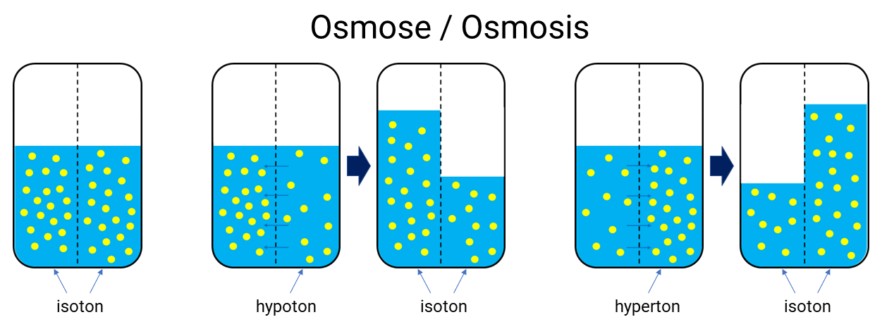
The cell wall of intestinal cells, for example, is such a semi-permeable membrane. The osmolality of human (and most animal) blood is about 290-300 mOsm/kg. This is also the case with our thirsty castaway in the lifeboat. However, the salt water around him has an osmolality in excess of 1000 mOsm/kg. So if he were to drink the seawater, his body would become dehydrated and our castaway would die of thirst if he was not discovered quickly.
Disease patterns in calves due to incorrect osmolality balance
Similar problems can occur when a calf consumes milk with too high an osmolality (hypertonic). If the milk replacer mixture is too concentrated or minerals are added, the calf feed may become hypertonic, possibly leading to problems with diarrhoea.
This can happen firstly because fluid in the intestine is no longer properly absorbed by the body.
Secondly, it may lead to cell damage in the intestinal wall, which can then cause what is known as "leaky gut syndrome". Damaged cells become permeable to pathogens, which are then able to enter the metabolic cycle unhindered and cause a variety of problems.
Moreover, multiple studies have noted inflammation and ulceration of the abomasal wall, in addition to diarrhoea, when hypertonic calf feed is given over the long term (e.g. "Intestinal adaptations to energy source of milk replacer in neonatal dairy calves" A.C.Welboren, B. Hatew, J.B.Renaud, L.N.Leal, J.Martín-Tereso, M.A.Steele 2021).
Very high osmolality (over 600 mOsm/kg) can also be the cause of abomasal bloating. The milk or also the rennet cake can remain too long in the rennet stomach and is not sufficiently transferred into the small intestine.
Composition of whole milk
But what does this have to do with calf rearing? It's simple: natural whole milk is ideally suited to calves. Whole milk also has an osmolality of around 300 mOsm/kg. Osmolality in milk is primarily determined by minerals and lactose. Because milk and blood have approximately the same osmolality, there is no problem with harmful osmotic processes in the intestine.
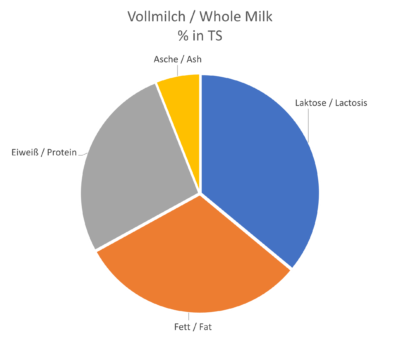
Whole milk generally consists of 87 % water and 13 % dry matter. Depending on the milk ingredients, whole milk contains the following ingredients in dry matter: 36 % lactose (35 – 37 %), 30 % fat (28 – 34 %), 26 % protein (25 – 28 %) and 6 % ash (6 – 7 %).
It is also important to remember that the protein is divided into two fractions: casein and whey protein. At 80 %, casein accounts for the significantly higher proportion of total protein.
This works very well, because the calf's digestive enzymes are also split up in the same proportion. The protein-splitting enzyme chymosin (rennet ferment) is predominant in young calves (approx. 80 %). It serves to help digest casein. Only 20 % of the enzymes are pepsins, which can break down whey and plant proteins. It is only after 4-5 weeks that the enzyme ratios begin to change and the pepsins become dominant. This means that young calves need casein protein in their diet.
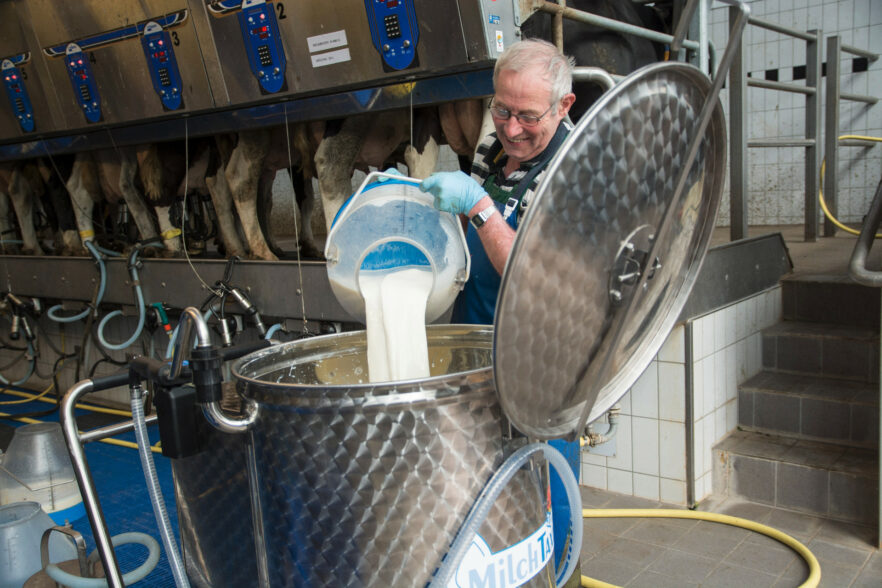
Composition of milk replacers
Milk replacers (CMRs) are made from by-products of food production.
When butter is made, fat is removed from the milk, leaving skimmed milk, which is then dried and used as skimmed milk powder in the CMR. Skimmed milk still contains all the protein components, including high-quality casein. It still contains casein and pepsin in a ratio of 80:20.
However, when cheese is made, pretty much all the casein is converted into cheese. The fat content is also completely incorporated into the cheese. What remains is what is known as sweet whey. It only contains whey proteins and all the minerals (ash).
Calves are not able to curdle this whey sufficiently in their abomasums. This is why it often reaches the intestine in an uncurdled state. The nutrients are then absorbed directly through the intestinal wall.
(Some CMR manufacturers claim that this faster rate of milk transfer also leads to increased milk intake, which is a positive aspect. We at Holm & Laue can neither confirm nor refute this assertion. However, the faster rate of transfer can also lead to insufficient lactose digestion, so that the intestinal flora receive large amounts of nutrients, multiply rapidly, which can result in diarrhoea.)
Dried sweet whey powder has a protein content of only about 12-13 %. This proportion is clearly too low for conventional milk replacers. At least 20 % is necessary. For this reason, other sources of protein are added to the zero replacers (zero replacers are CMRs that do not contain skimmed milk) in order to increase the proportion of protein they contain.
For example, partially de-sugared whey powder, where a large proportion of lactose has been removed from the product. This automatically increases the amount of protein. This can vary from 20 to 35 % protein in the dry matter depending on the product. However, removing sugar automatically increases the ash content in the product.
Another option would be vegetable proteins, such as soy or wheat proteins. Young calves do not digest these products easily and they should not be used at all or at least be broken down using special processes (hydrolysis). You can use the raw fibre content in the milk replacer as a rough guide when assessing CMR. Raw fibre indicates the use of plant-based products. Raw fibre content should therefore not exceed 0.1 %.
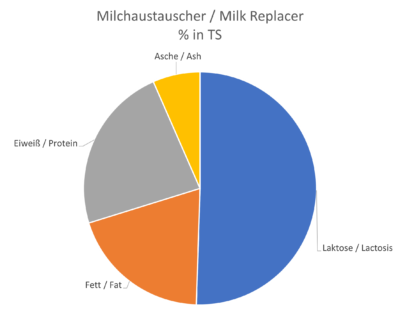
As a consequence, milk replacers have very different compositions depending on their formulation. A sample of 10 different products (skimmed milk powder and whey powder) showed the following ingredients in dry matter: 50 % lactose (45–51 %), 19.5 % fat (18–20 %), 23 % protein (21–24 %) and 7.5 % ash (7–8 %).
Fats in milk replacers
Since nearly all of the milk fat is extracted in both butter and cheese production, extra fat needs to be added. Vegetable fats are unproblematic in milk replacers and are easily digested. They have no influence on osmolality, either. However, fats imported from overseas, such as palm oil and coconut oil, are increasingly coming under criticism from society because they generally come from regions with former tropical forests. But that is surely a different issue.
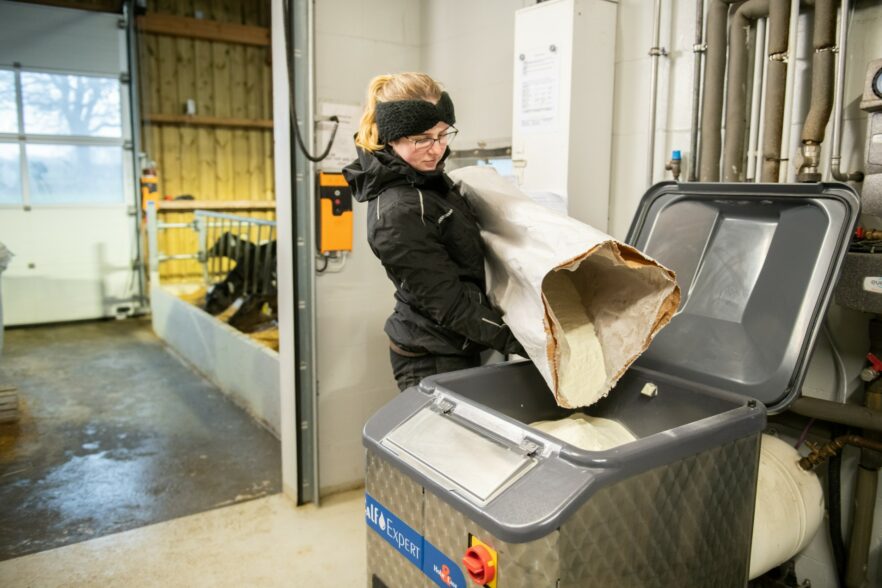
Please only use sugar and salt in moderation
It is therefore evident that milk substitutes, regardless of quality, are fundamentally different from whole milk. Levels of lactose and ash in particular are significantly higher. This means that the osmolality of the milk replacer is also higher (hypertonic). It ranges between 400 and 600 mOsm/kg, depending on the product. This means that we continuously expose the calves to stress which, as described above, can lead to problems with diarrhoea and ulcer formation in the abomasum. Osmolality and the risk of diarrhoea increase particularly with the increased CMR concentrations that are often recommended.
This means that care should be taken to ensure that lactose and ash levels in the milk replacer are not too high. This is difficult because it is not compulsory in Europe to show lactose content on the product declaration. The ash content (minerals) in the milk replacer should not exceed 8 %, with 7 % better.
What should I be feeding then? Whole milk, skimmed milk replacer, zero replacer or whey replacer?
It is not easy to give a clear-cut answer.
Whole milk
Whole milk is generally best for the calves to digest, as its osmolality and protein composition meet calves' needs. However, aspects of hygiene need to be borne in mind when feeding whole milk. You can read about what is at stake in this blog post: "The H&L whole milk story"
Skimmed milk replacer
Pure skimmed milk powder contains high-quality casein, which calves can easily digest. However, whey products are usually also added to skimmed milk powders in order to achieve the necessary protein content or even to reduce costs. As the whey content increases, the casein content decreases, meaning increased osmolality.
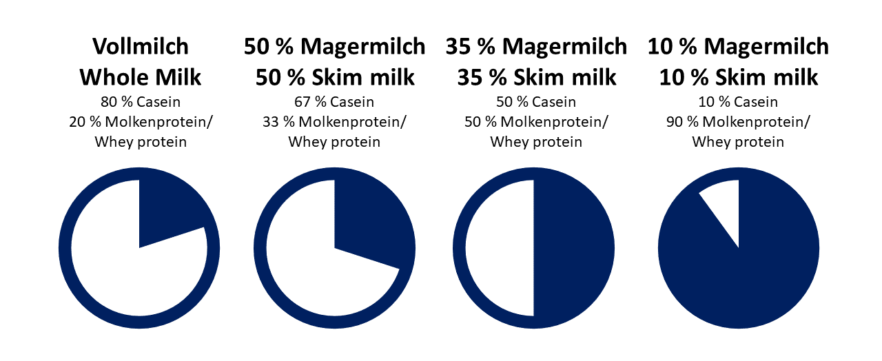
Experience has shown that skimmed milk proportions of less than 20 % should be avoided, as rennet cake can no longer be formed sufficiently in the abomasum. This also applies in particular when mixing skimmed milk powder with whey powder.
Zero or whey replacer
These milk powders are ideal for use in calves aged 4-5 weeks and older. Their own digestive enzymes are then prepared to digest whey protein. However, too high mixing rates (more than 13 % dry matter or 130 g/l feed) are not recommended due to their high osmolality.
What about electrolytes?
A common belief expressed when calves are sick or also suffering from stress is, "Electrolytes always help". However, there are a few things to bear in mind:
- Electrolytes mixed in milk will massively increase the osmolality of the feed, especially in powdered milk feeds (see above). This is therefore something that should be avoided. When using whole milk conditioners with a high mineral content, the relevant product information must be observed.
- An "isotonic" solution should always be prepared when dosing the electrolytes. This is because if calves develop diarrhoea due to hypertonic calf feed, you do not want to stress them with a hypertonic electrolyte as well. Please follow the manufacturer's instructions carefully in this case too. As a rough guide, an osmolality of 290-300 mOsm/kg in blood corresponds to a 0.9 per cent NaCl water solution.
Another thing that is important: continuity.
Besides choosing the right type of milk feed, how it is prepared is also crucial. There are three key things to consider here:
- Continuity.
- Continuity.
- Continuity.
Calves like things to be boring. Always prepare the same milk feed, at the same temperature, in the same concentration and in the same quantity. The best way to ensure this is by using modern feeding technology. Automatic feeders need to be calibrated and adjusted correctly and care must be taken to use the correct amount of milk replacer when hand feeding. The MilkTaxi offers the ideal aid for mixing the exact milk replacer concentration in the form of Smart-Mix.
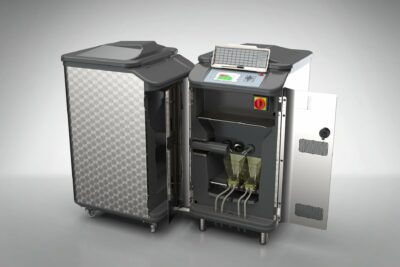
Feed changes should be as gentle and gradual as possible. Transition from one type of milk to the next should take place over at least 7 days (14 days is better). If, for example, a zero replacer is to be used during the weaning phase, a second powder chamber on the CalfExpert feeder can ensure that this transition proceeds slowly and gently. Individually adapted to the age of each calf.
Talk to your milk powder supplier to clarify the mixing ratios that should be used with their milk powder.
If you follow the advice from this blog, you will not founder when feeding your calves. Instead of dying of thirst on the high seas, you can toast your success at calf rearing with your team with isotonic, non-alcoholic beer or even apple spritzer.

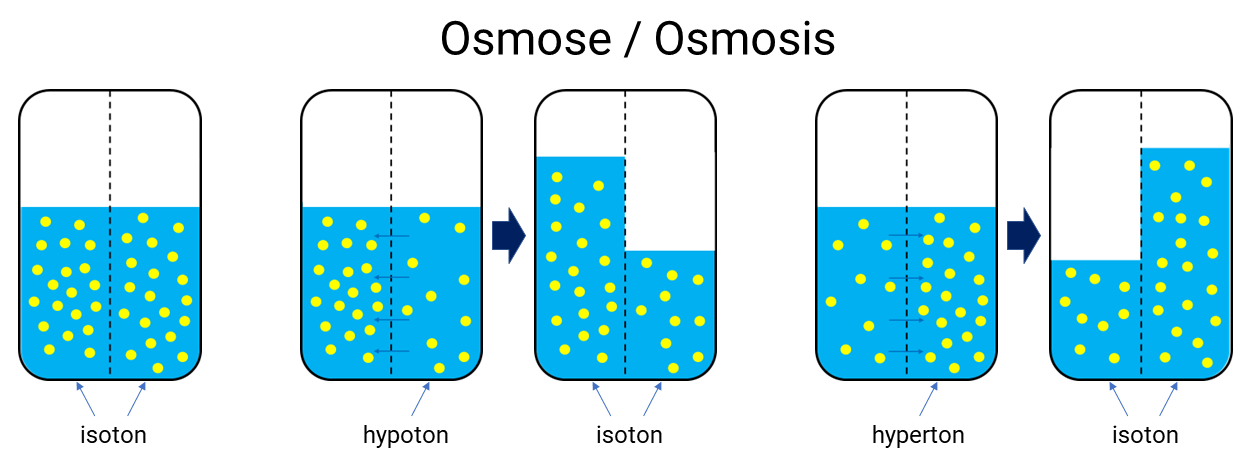
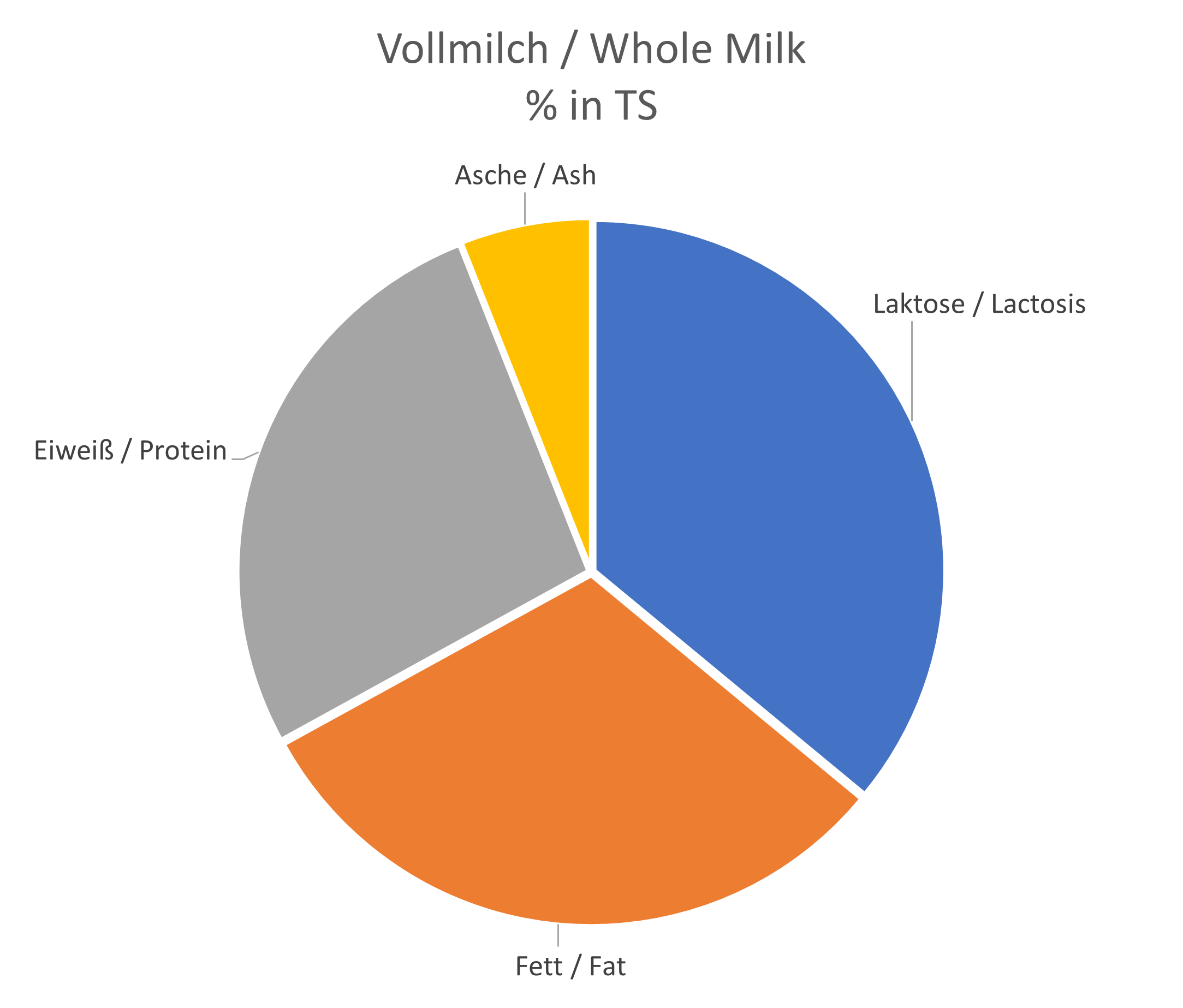
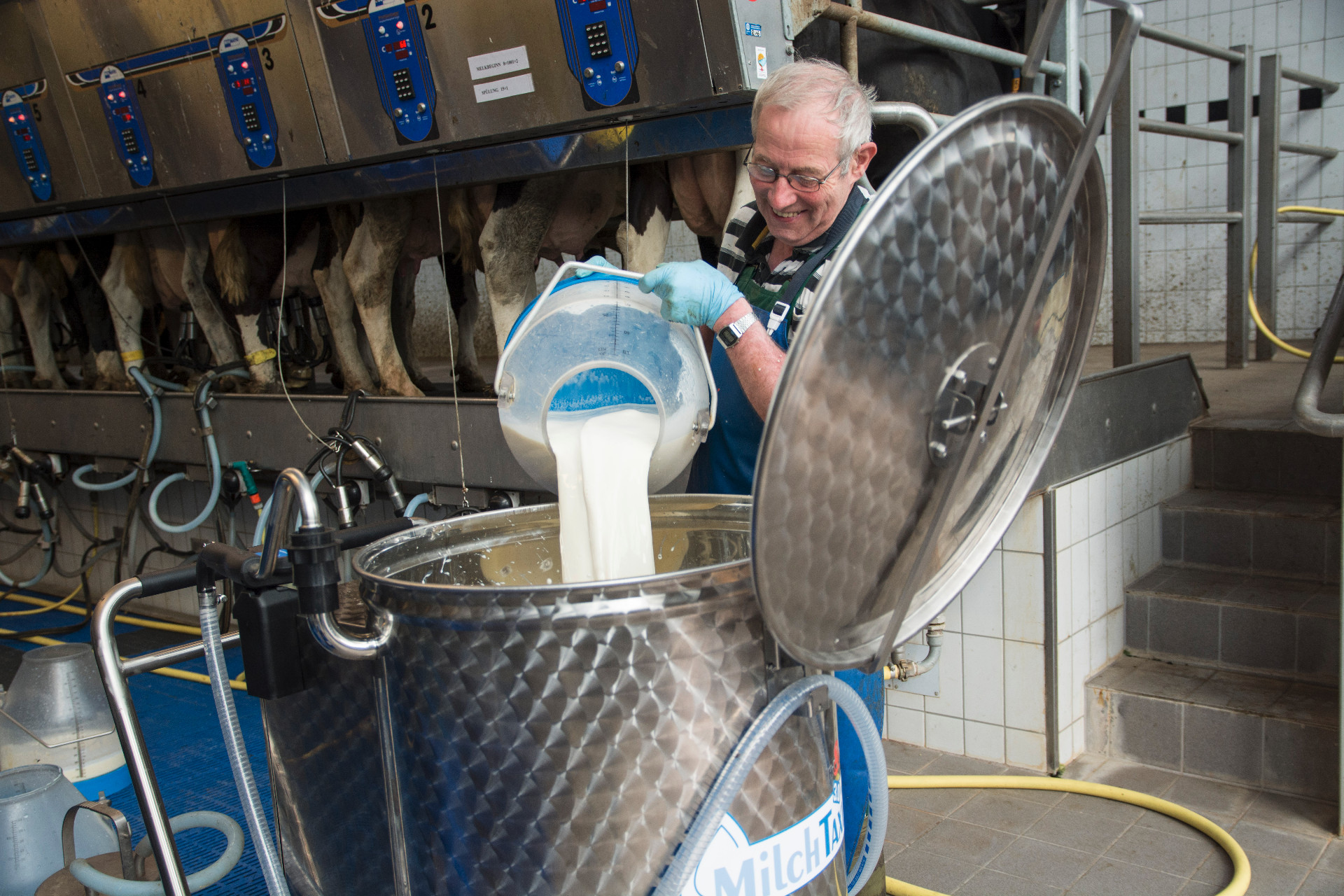
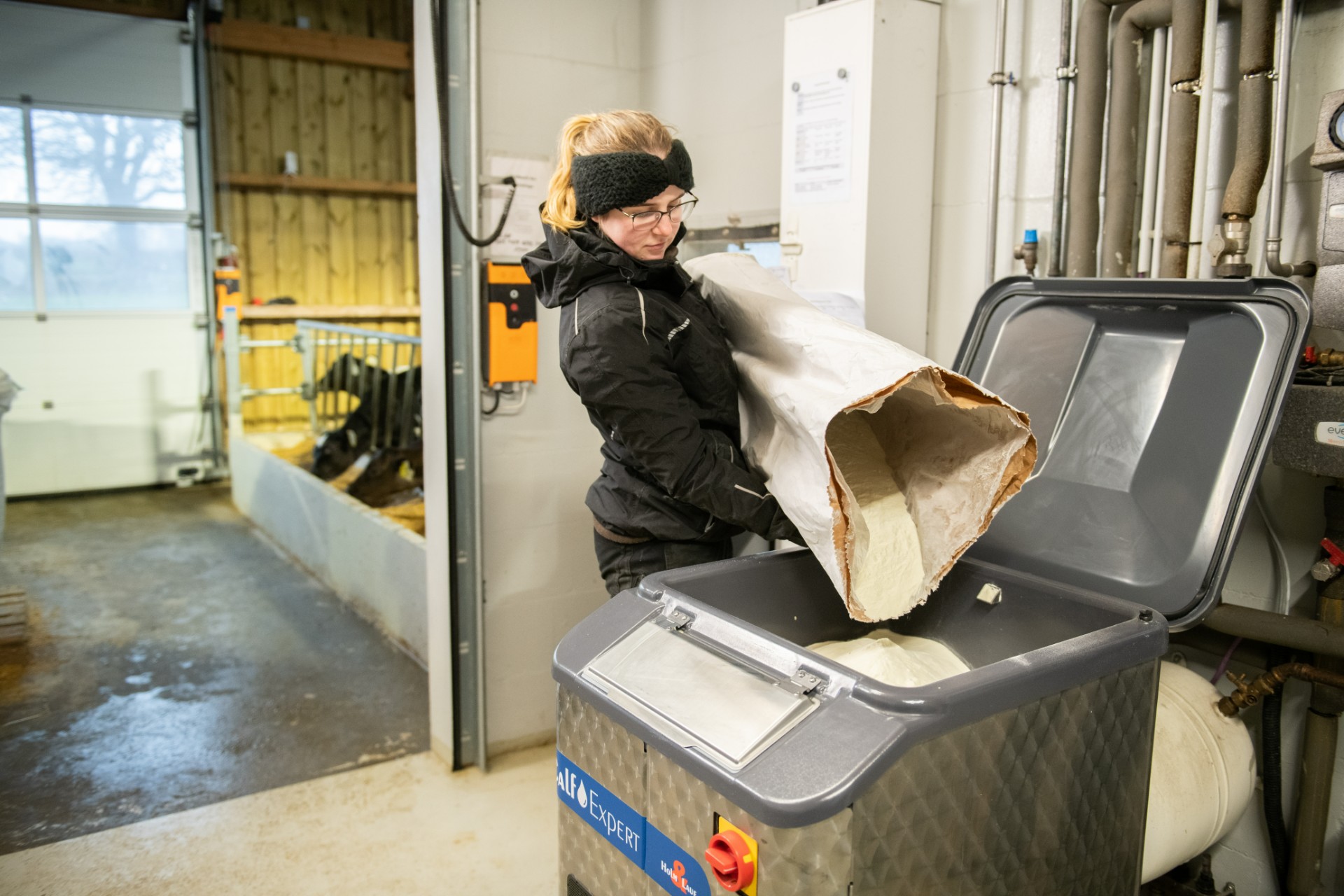 Using milk replacer in the CalfExpert
Using milk replacer in the CalfExpert
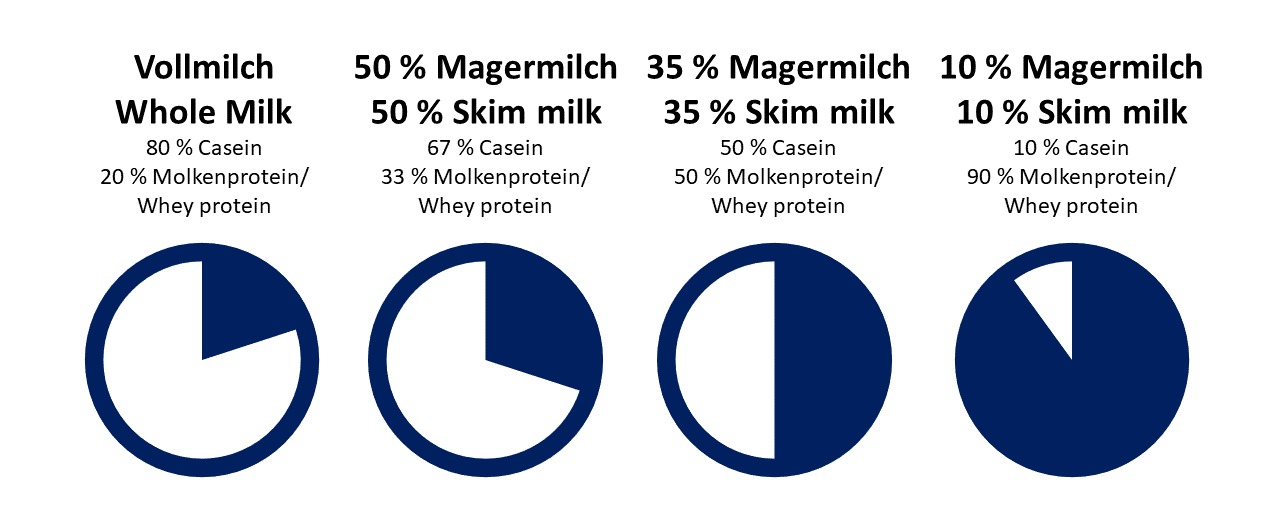 Calculated comparison of the protein content in CMRs with varying proportions of skimmed milk
Calculated comparison of the protein content in CMRs with varying proportions of skimmed milk
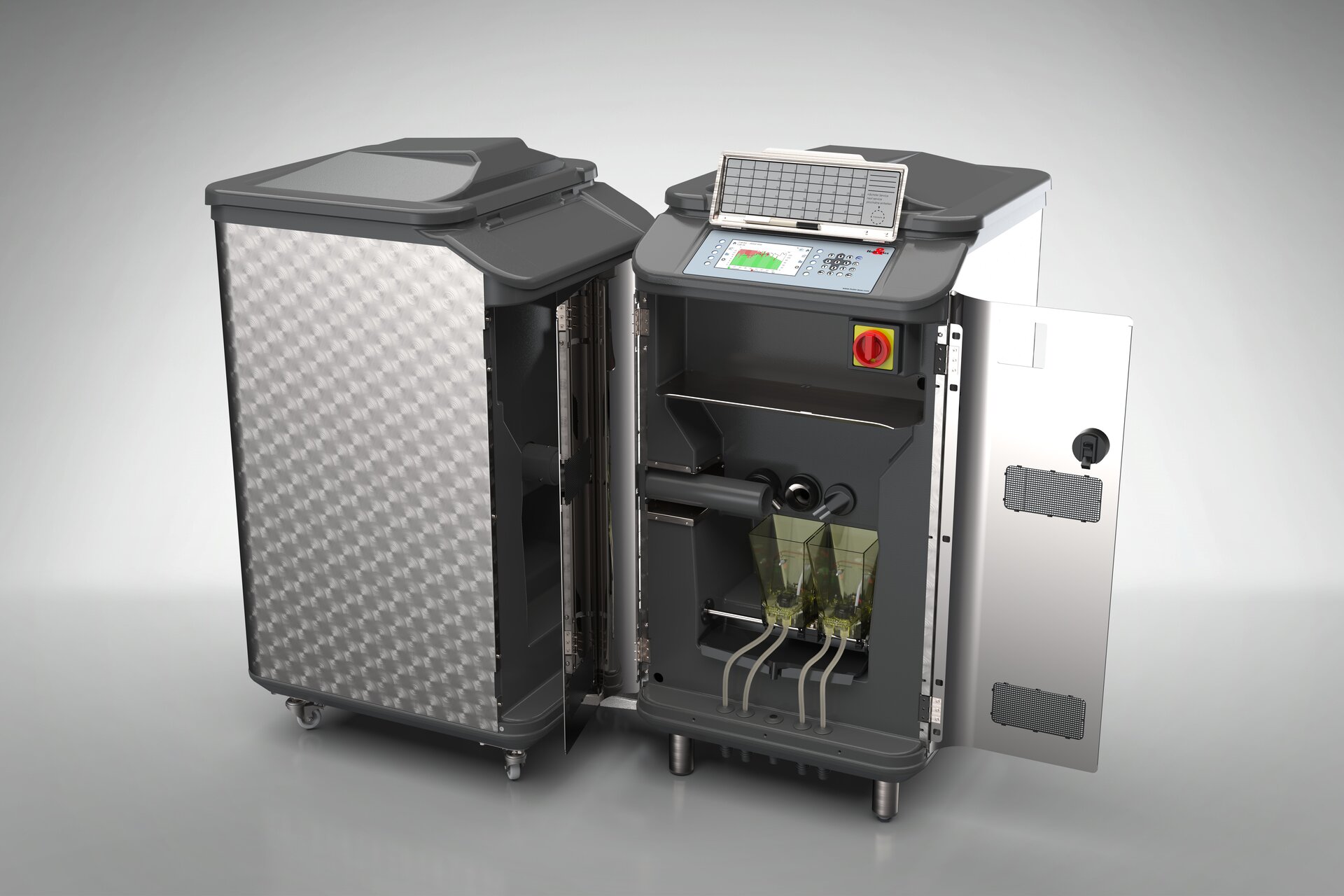 CalfExpert with a second milk powder chamber (50 kg + 50 kg volume + 50 % extension reserve)
CalfExpert with a second milk powder chamber (50 kg + 50 kg volume + 50 % extension reserve)